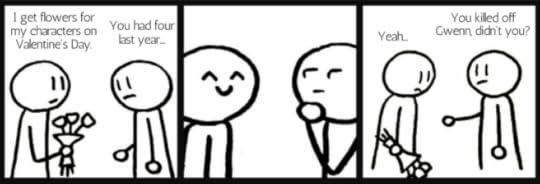Nate Philbrick's Blog, page 10
March 7, 2016
9 Reasons To Index-Card Your Manuscript
Last week I finished the first draft of The Children Of Falore (title subject to change). Which means that, in the next few days, I’ll be starting the editing phase.
But there’s one thing I always do before editing a manuscript, and that is indexing. What’s that, you ask? Basically, I go through my outline*and fill an index card for each scene in my manuscript. On each index card I include the following information:
Scene title/brief summary (so I know what’s going on)
Scene number (the order in which they tentatively take place)
POV character (not necessary if all your scenes are the same POV)
Location
Time of events in story context
Word count
Important info disclosed (if applicable)
Marks for pivotal scenes (inciting event, climax, turning points, etc.)
*I use Scrivener, so it’s all there on the screen, but you may not have a physical outline. In that case, flipping/scrolling through the finished manuscript itself works just as well, if a bit tedious.
I end up with pretty much my whole manuscript condensed into a stack of index cards. For Little One, which had about 93k words, I needed about 70 cards because most of my scenes were on the short side. Your results will vary. Spread out on the table, it looked like this:
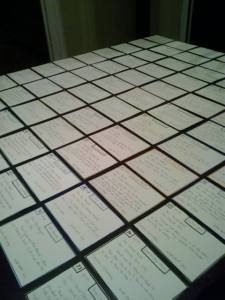
The reasons I do this are several. Here, I’ll list some of the major benefits of indexing your manuscript’s first draft.
#1 Get the big picture (literally)
Having all your scenes compiled in a physical, manageable stack of cards makes getting the big picture so much easier in the most tangible way. Take the photo above, for instance. I can immediately spot my story’s layout and the location of major events. Are they too close together? Does my pacing need work? Do I need more exciting chapters? Should I slow down? This is a great way to spot those potential issues.

Here’s a photo of my index cards beside my outline diagram. Twice the big-picture-viewing, twice the efficiency.
#2 Manage characters and POV
You wrote down each scene’s POV character. Now you can tell what the balance is between your main characters and your secondary characters, as well as if it needs adjusting. Hint: color coding each card according to its POV character makes this a visual piece of cake. You won’t even have to read the card.
#3 Spot plot holes
Having your whole plot laid out where you can see it all at once has a knack for revealing plot holes you may have missed just scrolling down a screen.
#4 Organize or re-organize
You can mix and match your index cards to your hearts content to rearrange chapters, scenes, or whole sections without messing up your document or having to copy-paste a million times. Again, the advantage of visualizing where each scene sits can be super valuable to see if maybe chapter 4 might work better as a part of chapter 7.
#5 Reference quickly
For all other purposes or editing needs, you’ll have your stack of scenes ready to consult at a moment’s notice. You’d be surprised how much time you’ll save when fact-checking, double-checking, quoting, comparing, etc. The more intricate your story, the more likely you’ll thank yourself for making this resource.
#6 Balance content
If you color-code your index cards according to content type (dialogue, action, backstory, flashback, description, etc.), you’ll be able to spot unbalanced sections right away.
#7 Jot down notes
Keep a stack of pens or markers nearby, and you can quickly make marks or notes on your cards according to each scene’s needs. A handful of my index cards ended up with big ‘ol red x’s on them. They simply didn’t add anything, so out they went. Yes, you can do this on a printed doc or a laptop as well, but if you have your cards anyway, it saves time, and can be accessed quickly later on.
#8 Reinforce story structure
If you’re not an outline and prefer to make things up as you go, indexing your manuscript is a fantastic way to make sure your first (or second, third, etc.) draft is properly structured so that readers don’t get lost or confused when reading. Not all ‘pantsed’ manuscripts necessarily need this, but there’s a greater peril of structure weakness in early drafts without prior outlining.
#9 Keep track of time
If you’re like me, you very easily lose track of how much time has passed in your story. If you marked your cards accordingly, you’ll be able to keep track of how many days, weeks, or months go by during and between scenes.
There are other advantages to indexing your manuscript via scene-list. These are some of the ones that have helped me the most. I hope some of them help you as well, should you decide to give it a try!


March 2, 2016
6 Benefits Of #1LineWed
For those of you who aren’t on Twitter or, for whatever reason, haven’t ever followed a #1LineWed tag on social media, it’s an event each Wednesday in which writers and authors share lines from their projects under a certain theme, identified by the aforementioned hashtag (short for 1LineWednesday).
For a while, I didn’t pay much attention to the trend, but in recent months I’ve been getting more involved, and now it’s one of my favorite writerly trends on Twitter. Here are six reasons why I would encourage writers and readers alike to tune into #1LineWed:
#1 You get to share your best lines
1LineWed is the perfect opportunity to show the world that clever line you wrote last week. Simply put, it’s loads of fun.
#2 You get a glimpse of other writers’ style and voice
Lines shared for 1LineWed tend to stand out for their humor, beautiful prose, shock value, cleverness, etc. It’s amazing to see how, within one specific theme, each write has something unique to share.
#3 You learn how prominent a theme is in your manuscript
Today’s theme was ‘need’. I ran a word search in my manuscript, and was surprised by the results. I used the words need, needed, or needs at least once in over half of my scenes. I jotted down a memo to cut out as many of those as possible when I start editing.
On the flipside, a few weeks ago the theme was ‘smell’. Once again, I ran a word search and found out just how scarce my use of the sense of smell was. Since then, I’ve made a point to incorporate all senses, not just sight/sound.
#5 You find new people to connect with
Returning to social media for a moment. A simple click on the hashtag takes you to a constantly updating list of what people are sharing, which in turn gives you a bunch of fantastic writers you’ve maybe never met before.
#6 You get free exposure for your work
Tweets/posts with the 1LineWed hashtag tend to get a decent amount of views, likes, and retweets/shares. Even though the primary goal is to have fun and see what others are up to, it’s also a great way for people to find out about your book, ask questions, and maybe even take interest enough to stick around.
If you’ve never gotten involved in a #1LineWed event before, I definitely recommend giving it a try. The rules are simple: stick to the theme, no purchase links, and get creative! I hope to see you there soon. In the meantime, keep calm and write on!
February 29, 2016
In Case Of Book Sale, Break Glass
Not everyone knows how to react when a stranger (or even a friend) buys and reads their book. Here’s a quick, step-by-step guide so you know exactly what to do next time this happens to you.
Step 1: Panic
What? What is this? This can’t happen. I’ve been exposed. Compromised! Someone knows my name now!
Step 2: Succumb to misery
They won’t like it. It’s not good enough. They have more followers than me on Twitter, and they’ll tell everyone how bad my book is.
Step 3: Tell yourself everything will be okay
Maybe things won’t be that bad. They might like parts of it. After all, it’s not terrible, is it?
Step 4: Engage in mild celebration
Yay…I guess. First book sale this month. So…things are looking up, you could say. *Tosses confetti on self* Probably clicked on it by accident, though.
Step 5: Hope for the best
Well, who knows? If they do like it, maybe I’ll get a good review. Maybe they’ll recommend it to someone else. Fingers crossed!
Step 6: Decide how to respond
Okay, so they tweeted about it. Should I favorite it? Thank them? Is that too arrogant? Do I tell them I hope they like it? No, it’s a book, a piece of my soul, not a snowcone. Better play it cool and not say anything. But…is it kosher to retweet?
Step 7: Realize you have no idea what you’re doing anymore
It’s been fifteen minutes, and I haven’t moved a muscle. People around me are starting to look worried. If I had more sales I’d be better at this.
Step 8: Repeat step 1



February 26, 2016
30 Writing Facts About Me
#1 Ever since discovering Scrivener, I’ve pretty much ditched MS Word.
#2 Yes, I outline. Always. I outline my major plot points before I start the 1st draft, and I outline each individual chapter in detail prior to writing it.
#3 I use dialogue tags/beats way too frequently.
#4 Quite, really, that, seemed to, and much are some of the words I delete most from rough drafts.
#5 I rarely give more than a few details about my protagonist’s physical description. I prefer the reader create his/her own picture.
#6 When writing, I usually take breaks every half-hour to shoot hoops outside, weather permitting.
#7 If I don’t like how a scene is turning out, I delete it and start over, no matter how many words I have to sacrifice.
#8 When I start edits, I have to do it on a printed, 12pt Times New Roman or Garamond, double-spaced document. Because habits.
#9 I used to write exclusively with music, but I’ve grown to appreciate a nice, quiet room. I still put music on now and then to set a mood or block out other noises.
#10 Most of my stories start as very specific moments/events that I think would be fun to write. If they stick with me long enough, I’ll build an entire plot around them.
#11 I always have an ending in mind before I start writing, but I’m prone to changing that ending in the last minute (when writing Little One, I changed the ending during the final revision stage. Twice.).
#12 My nonverbals tend to focus on the character’s eyes. I’m working on diversifying that aspect of my writing.
#13 Before I decided to be an author, I wanted to direct movies. I still enjoyed writing, but I told myself and others it was only so I would remember the stories when I made them into movies.
#14 The vast majority of my writing is done on my laptop, though occasionally I’ll write by hand out of necessity.
#15 I have a hard time writing before lunch. My best writing times are in the afternoon and evening.
 A cat gif to break up the text. Because I can.
A cat gif to break up the text. Because I can. #16 I try to write near a window whenever I can.
#17 Yes, I usually have coffee/tea when I write. Coffee in the afternoon: milk and sugar. Black or red tea with honey in the evening (Earl Grey, Irish Breakfast, and Rooibos are my go-to teas).
#18 The first chapter is the one I struggle with the most, and I often re-write it multiple times before finding an approach I like.
#19 I draw my own maps for my books. I love maps.
#20 My novels (current and planned) are almost exclusively fantasy. Most of my published short stories, however, are not.
#21 I don’t hate adverbs as much as the rest of the world seems to.
#22 I get sick if I try to write in the car, but some of my best ideas hit me while staring out the window on long trips.
#23 On an average writing day I get 1500-2000 words done. I want to increase that number.
#24 The most I’ve ever written in a 12-hour day is 10k words, an experience you can read about in more detail here.
#25 I love writing stories/chapters set in forests.
#26 Making up new creatures is one of my favorite parts about writing fantasy.
#27 My novels are mostly written in the 3rd person, while most of my short stories are told in 1st person.
#28 I’m not shy about killing off characters.
#29 I’ve sworn an oath never to write a story centered around (or featuring) a prophecy.
#30 I absolutely love what I do (no surprise there!).
What are some writerly facts about you? Do we share things in common, or are we totally different? Write your own post with 30 facts if you feel like it, or comment below!
February 24, 2016
The Writer’s Life According To Gollum
I believe this is the fourth part of The Writer’s Life post series. If you’re just joining now, don’t miss out on the first three!
The writer’s life according to Jack Sparrow
The writer’s life according to Sheldon Cooper
The writer’s life according to Minions
The Writer’s Life According To Gollum
 Grinding out those last 100 words to meet your quota.
Grinding out those last 100 words to meet your quota. The faces you inevitably make when writing in public…
The faces you inevitably make when writing in public…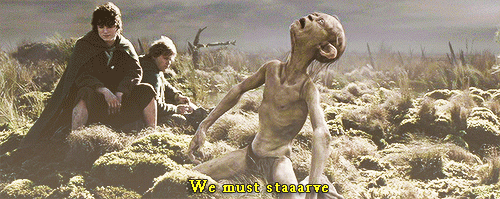 When your royalties notice arrives in your inbox.
When your royalties notice arrives in your inbox. 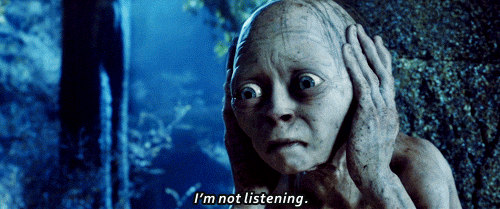 Trying to ignore your inner editor during the first draft.
Trying to ignore your inner editor during the first draft.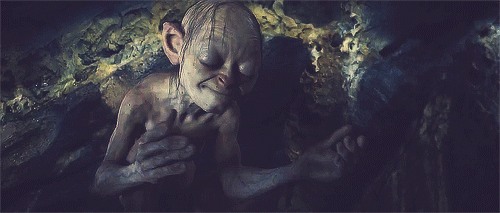 Writing that chapter where the love interest dies.
Writing that chapter where the love interest dies. When your editor sends back corrections and suggestions…
When your editor sends back corrections and suggestions… …but they urge you to make the changes anyway.
…but they urge you to make the changes anyway.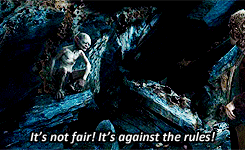 When an interviewer/reader asks what your next book is about.
When an interviewer/reader asks what your next book is about. The faces you make when brainstorming a new idea.
The faces you make when brainstorming a new idea.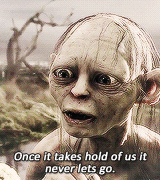 When you get a new story idea in the middle of your current project.
When you get a new story idea in the middle of your current project.
(These gifs do not belong to me. All gifs found at giphy.com)


February 22, 2016
To Self-Publish, Or Not To Self-Publish…
This post is a brief update on my work-in-progress, The Children of Falore (temporary title).
Those of you who pay any attention to my annoying ramblings on Twitter know I’m nearing the end of the first draft of my current manuscript. I’m shooting for about 75 thousand words for this one, and if today’s writing is a success I’ll be at about 57-58 thousand.
My goal has been, for some time, to finish the first draft by the end of the month and self-publish the book by mid-April (I outline A LOT, so I won’t have to spend a lot of time on re-writes).
Recently, however, I’ve been toying with the idea of going the traditional publishing route, for several reasons:
As of now, I can’t afford to shell out 300 euros on a cover artist. I’ve checked into those stock cover design sites, but have yet to see one I like. As I’ve said before, I’m just not into stock-photo covers. Sorry.
Traditional publishing has always been my long-term goal. I have another fantasy manuscript on the backburner, and I know for sure I’ll be querying that one, but maybe I should give the current one a shot as well…?
My self-publishing journey with Little One was…rocky. The initial release was a flop, and I’ve had to revise the files SO many times, it’s not even funny. Plus, I really, really, really hate Createspace. The reviews have been phenomenal ever since, but I honestly don’t know if I want to go through that much stress again.
All that being said, I also have great reasons to go ahead and self-publish:
A lot of people are waiting to read it. It might sound pretentious, but it’s true. The snippets and passages I’ve shared have generated a lot of interest, and I don’t want to have to wait months or years before even knowing if it’ll be published.
I have some upcoming marketing opportunities (book fairs, events, etc.) that could really jump-start sales if I go ahead and self-publish. If I wait, I’ll miss out.
I do think this novel could do well as an indie book. Given a bit of luck and exposure.
I really want to have control over what my cover looks like, and I know 99Designs (the site I used for Little One) yields amazing results. I just need to come up with the funds.
For now my focus is solely on finishing the first draft. Once that happens (end of the week, hopefully), I’ll have to make a decision. The perfect solution would be to find funds for a cover artist, proofreader, and formatter. That would remove the cost issue and the stress of doing it all myself. This book could hit Amazon within the next two months. If not, we’ll see.
I’ll keep you all posted. In the meantime, keep calm and write/read on! Have a great Monday, everyone.
February 19, 2016
My 10K Word Challenge
Yesterday I wrote 10k words in one day. The process was fun but exhausting, and I’m pretty satisfied with the results. In this post I want to share a few observations on what helped me achieve this goal and what slowed me down.
10k Day – Positive Factors
These are the factors that really helped me and pushed me to finish those 10k words, even when the day started to get really long.
Planning the time ahead
I chose this day ahead of time and set it apart, knowing I would be able to dedicate most of my time to writing. I work part-time as a teacher’s assistant, so I made sure to plan for a day I didn’t have to go in. I also set aside my other freelance work. The day was all for writing.
Following a detailed outline
The day before my designated 10k day I created a detailed outline of the chapters I would be writing. By doing so, I eliminated the need to stop and think of what to write next. Everything was laid out for me, down to the target word count for each scene.
Keeping a consistent pace
For the most part I write in 500 word chunks and take a quick (5-10 minute) break between each section. I do this to make sure I don’t go full-steam and burn out in the first two hours of writing.
I’m not rushing or pounding out words. I don’t want to burn out halfway there. Oh, and there will be lots of tea happening. #10kDay
— Nate Philbrick (@NatePhilbrick) February 18, 2016
Social media support
Twitter played a huge role in the success of my 10k day. I know getting on social media is counterintuitive when trying to focus on writing, but by posting regular updates on my word-count, I kept myself motivated. I wanted to prove I could do it. Twitter responded with a surprising amount of favorites, retweets, and amazing encouragement and support. Massive thanks to you all!
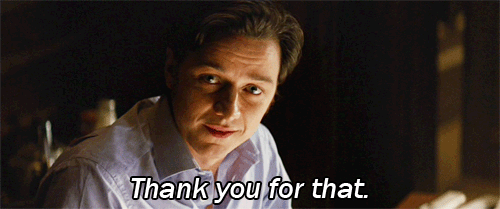
Recognizing the magnitude
10k is a big number. I don’t know how much you guys get done on an average day, but if I can write 2000 words I’m pretty happy. I had to face the fact that writing 10k words was going to be difficult. I needed to take it slowly and patiently. If I tried to tackle the whole block at once, I would have burnt out.
Willingness to delete words
A lot of people might think that to write 10k words you have to plow ahead and refuse to go back and make changes. I’m not that kind of writer. If a scene isn’t working for me, forcing it onto the page only slows me down and throws off my groove.

I had to be willing to go back and delete large sections to start them over. For me it’s worth it to lose that progress and get back on track with a solid scene than to end up with a terrible 500 words that I’m going to delete later anyway.
Holding to the drive and passion
Let’s face it. If I didn’t believe in this story, if I weren’t in love with it and excited about it, getting even a page done would be a chore, never mind shooting for 10k words. Also, I relied on a lot of stubborn determination and stick-to-it-ness.
10k Day – Obstacles
As with any plan, things came up that put up roadblocks of varying sizes between me and my 10k word count goal. Some of them I could have avoided, some were simply unpredictable.
Physical and mental fatigue
I knew by the end of the day I was going to be wiped out. It’s unavoidable. Typing 10.ooo individual words drains the fingers and the brain. Coffee and tea helped combat fatigue, but still…it got tough.
Poor choice of day
When I first planned the day for writing, I’d forgotten company was arriving from out of the country later that night. Needless to say, if I had chosen a different day I could have avoided a few unplanned cleaning and preparation breaks.
Noise
Yesterday felt like National Make Noise day. The neighbor’s dog sang its own rendition of Les Mis for three hours straight. I despise that animal. My younger sister spent an hour yelling out in the yard. My youngest sister got out her toy drum and did her rounds.
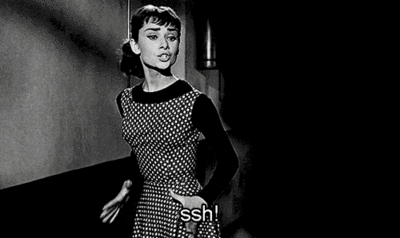
And my earphones broke, so white noise was not an option. Oh, well. These things happen.
I’m pleased with the results of my 10k day. That being said, I probably won’t be doing it again for a long time. I showed myself I could do it, I made a huge push in my manuscript, and today I’m calling in brain-dead.
Got’em! #amwriting #10kDay pic.twitter.com/ROGwvlLFVp
— Nate Philbrick (@NatePhilbrick) February 18, 2016


February 17, 2016
The Fiction Writer’s Job Description
a very official document
(Please read and understand complete requirements before submitting your application.)
Work Location
Anywhere (this field includes but is not limited to households, offices, coffee shops, front porches, back porches, under porches, city parks, secluded glades, and cardboard boxes in back alleys).
Departments
Available office departments include the Perpetually Drafting Department and the Perpetually Querying Department.
Duties and Responsibilities
Applicants must be prepared to emulate successful forerunners with as little variety as possible and memorize as many famous quotes by said forerunners with no intention of applying the advice therein. Specific responsibilities include:
Perform related duties as assigned by supervisor (…what supervisor?)
Maintain compliance with all company policies and procedures (unless applicant is self-published, in which case torches, pitchforks, and general creative anarchy may apply)
Master and abuse trade hashtags such as #amwriting, #amediting, #writers, #writing, #WIP, #fiction #writetip, #writingtips, #write, #CampNaNoWriMo, and #PleaseBuyMyBookImBeggingYou
Occasionally, applicants may be required to finish a first draft
Education and/or Experience Requirements
Excellent verbal and written communication skills, including the ability to effectively communicate with internal and external customers, as well as the foreknowledge that it will take 5-15 drafts to do so.
Excellent computer proficiency (MS Office – Word, Excel and Outlook, Scrivener, Wattpad, Pinterest, Instagram, Netflix, YouTube, Ctrl+Z, Ctrl+C, Ctrl+V, and especially Ctrl+Alt+Delete)
Must have A+ certification in creative and critical writing skills, grammar skills, and procrastination skills (exceptions can and will be made for the first three)
Must be able to work under pressure and meet deadlines (or at least nod courteously as they whoosh by)
Ability to work independently and to carry out assignments to completion within parameters of instructions given, prescribed routines, and standard accepted practices (ability, yes; but no moral, social, or professional obligation to comply with any of said parameters)
High school diploma or GED required (applicants will be encouraged to scribble their outlines on said diploma. Also, GED stands for General English Disorder)
Associate Degree preferred. As in, anyone who associates with the applicant will be subject to plot/character experimentation to varying degrees (including but not limited to murder, villainization, or being dropped off in a magical forest never to be seen again)
Physical Requirements
Ability to safely and successfully perform the essential job functions consistent with the ADA, FMLA and other federal, state and local standards, including sitting in a chair…and not much else.
Ability to maintain and be subjected to consistent schedules, paired with the ability to formulate quasi-plausible excuses to undermine said schedules.
Must be able to lift and carry up to 50 lbs (of 1st draft waste).
Must have a minimum career/internship average of 78.4% accuracy on crumpled-paper-to-trashcan tossing (applicants may purchase Paper Toss on Android for a simulated practice).
Ability to type consistently with a minimum of three different body parts (fingers, toes, and forehead recommended) with an average of no higher than three spelling errors (per word).
Must have 24/7 access to coffee and/or tea and/or wine and/or chocolate and/or ice/cream (and/or other comfort food of choice).
Print Employee Name (for maximum efficiency, please include your personal name, pen name, Twitter handle, blog link, Facebook page, Pottermore username, and up to five promotional headlines).
Thank you for your interest in the position. We will respond to your application as quickly as we can.
February 15, 2016
Sunshine Blogger Award Tag
Blog tags are always fun. Hannah Heath nominated me for the Sunshine Blogger Award, and it’s taken me far too long to get around to it. If you don’t already follow Hannah’s blog, I highly recommend it!
These are the rules for the Sunshine Blogger Award:
Thank the blogger who nominated you for the award
Display the banner/sticker/logo on your blog.
Share 7 facts or things about yourself.
Nominate 5 bloggers that you admire and inform nominees by commenting on their blog.
Here we go!
Step 1: Thank the blogger who nominated you
 What says thanks better than a Dwight gif?
What says thanks better than a Dwight gif?Step 2: Display logo on your blog
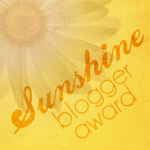 Voila.
Voila.Step 3: Share 7 facts or things about yourself
I’ll try not to repeat facts from previous blog tags…
It took me about 10 years to beat Super Mario 64 (broken Nintendo 64 = shattered childhood = ten year hiatus).
I play the 12-hole ocarina and the drums/trap set.
Country, jazz, and flamenco are my three least favorite music genres.
I view romance novels like I view peas: they’re mushy and always too many*.
Skyward Sword, Twilight Princess, and Link’s Awakening are my top 3 LoZ games (Oracle of Seasons and Ocarina of Time round out the top 5).
I’ve always wanted to be an inch taller (my body had the audacity to stop growing just shy of six feet tall).
I wrote 90% of my college papers the night before they were due.
Step 4: Nominate 5 bloggers
I officially and very ceremoniously nominate these fine folks (I honestly don’t know if you’ve been nominated already. If so, please continue on with your life in peace):
Gabrielle Massman @ Write For The King
Stephanie Gregory @ blackdragon80
Blaise Haddow @ The Book Boulevard
Michael Gunter @ Michael Gunter’s Tales
Sarah Mitchell-Jackson @ Running Without Slipping

Again, if you’ve already been tagged for the Sunshine Blogger Award, or if you don’t believe in sunshine or happiness, feel free to pass!
*Disclaimer: despite my snarkiness, I have nothing against romance authors/writers/readers. Just not my cup of tea.











